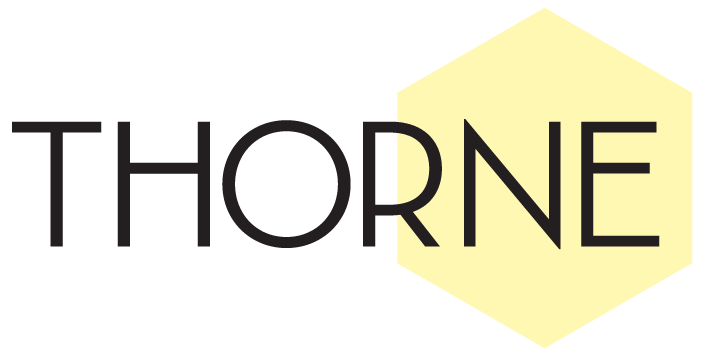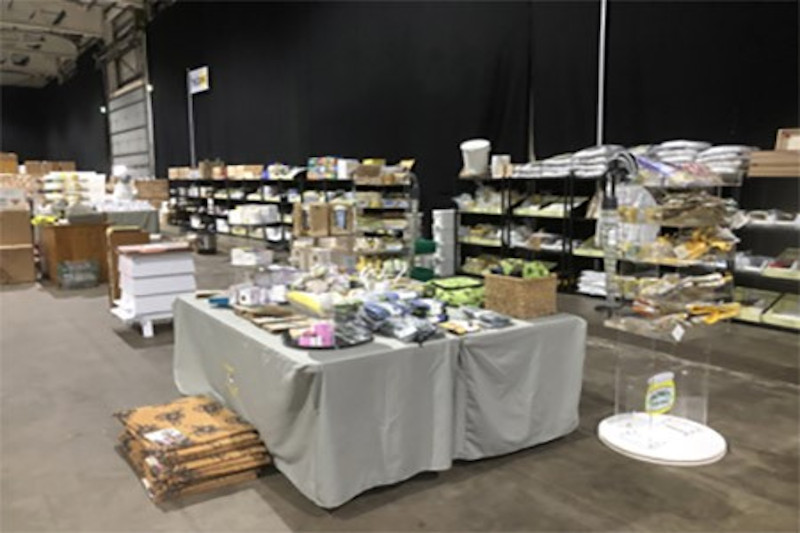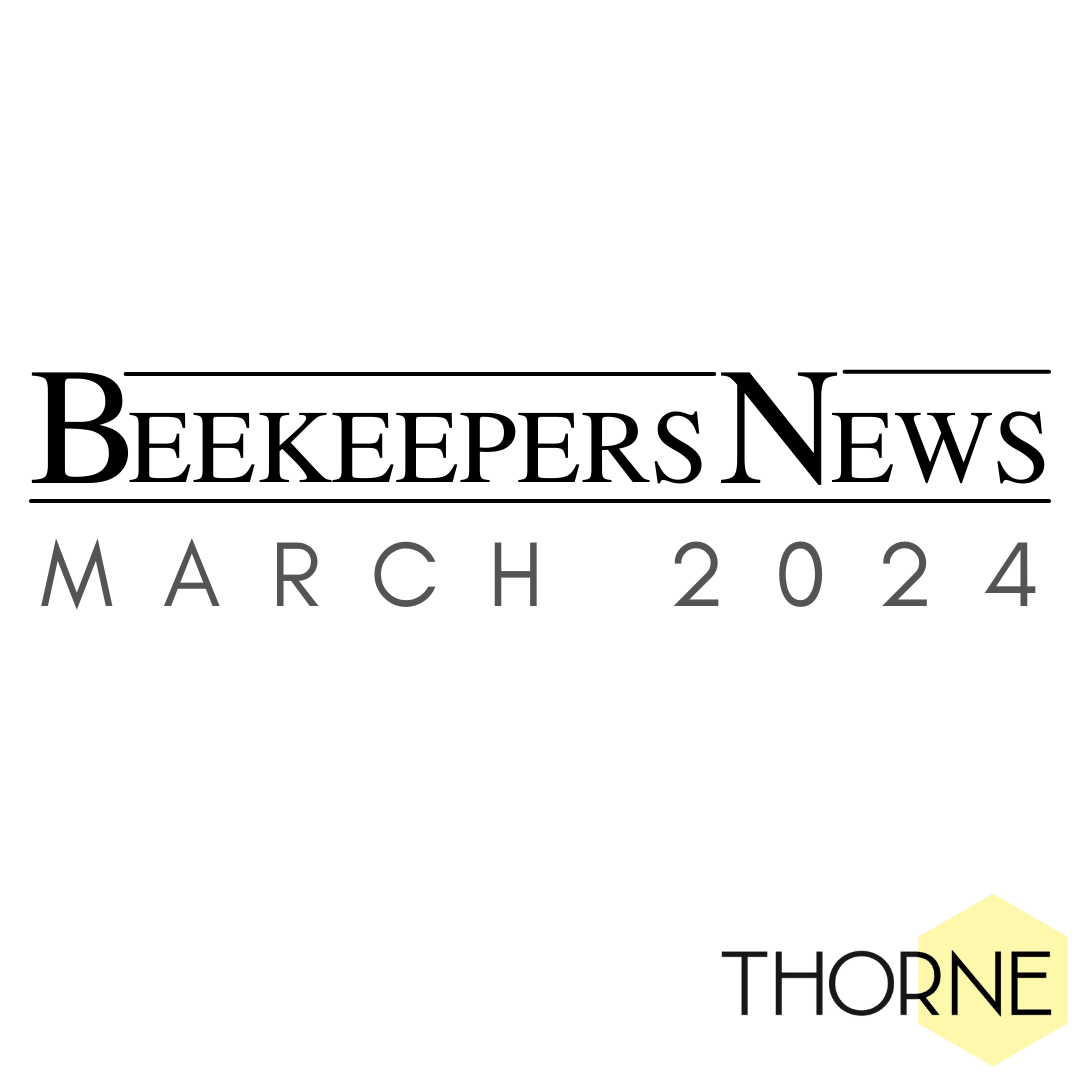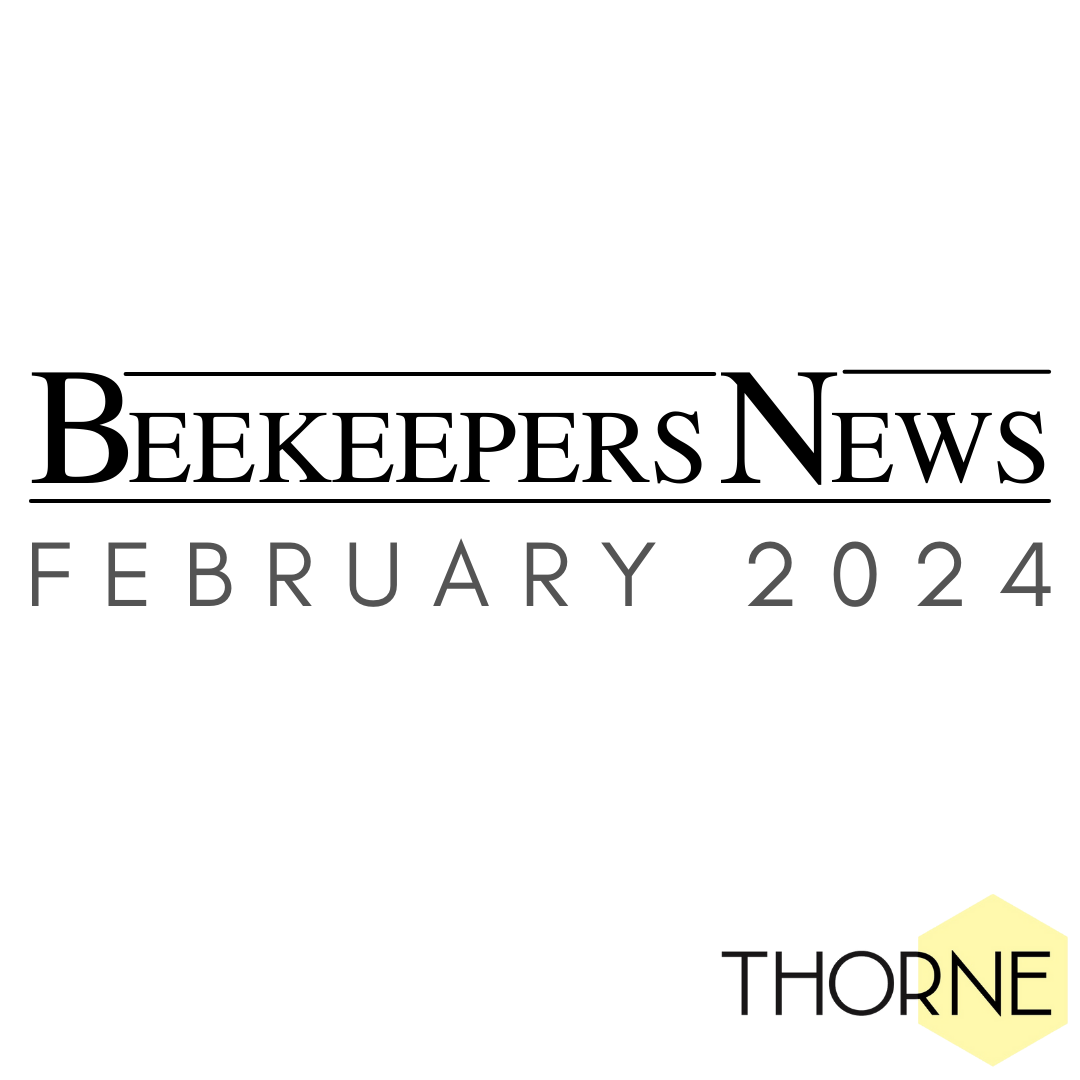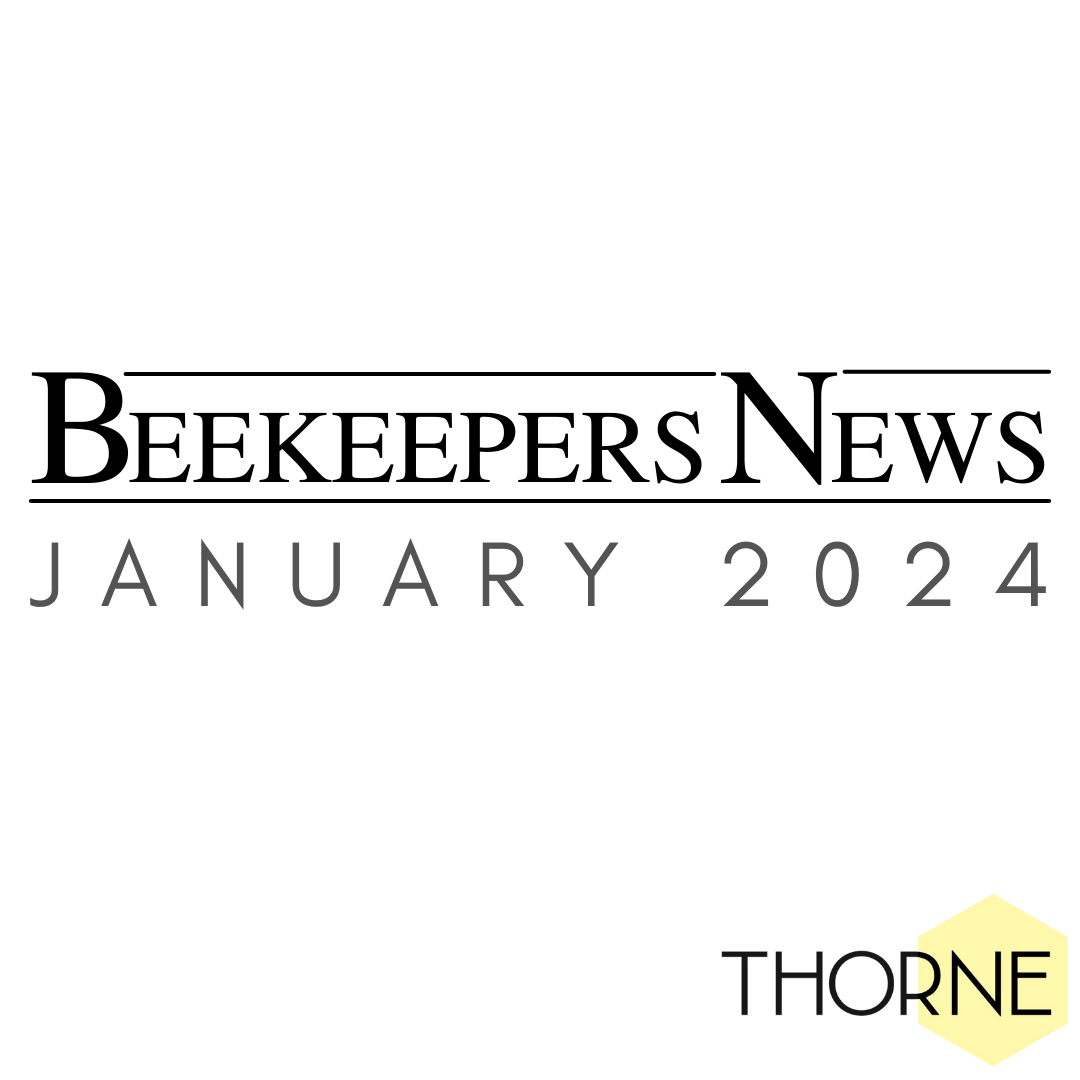March Roundup
It seems a long time since the last edition of this newsletter. I am not sure many of us would have imagined how we would be spending our March 2020 (and beyond).
However, BeeTradex did take place in early March. Numbers seemed slightly down, which was understandable, and several customers came and collected their orders without browsing.
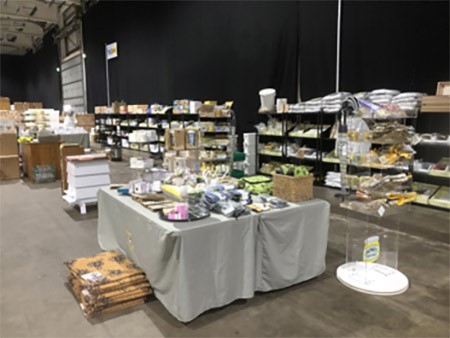
Since the lockdown, as a manufacturer, we have continued to operate, but with a reduced number of staff. Here at our head office our restaurant and shop are closed. Any manufacturing practices which mean staff are within two metres, have been postponed.
Orders are still leaving us within a couple of days but we have taken the decision to put some, non-essential, beekeeping equipment temporarily out of stock. This leaves us to concentrate on the core products that beekeepers need now and in the near future.
We are currently only producing premier foundation in our wax plant. Our stock of premier wax is greater than the standard grade and of course we have wax ‘in credit’ from several hundred beekeepers who will need their foundation very soon. This also enables the wax plant to work more efficiently without the need to change between grades. As soon as we can re-introduce our standard grade wax we will.
We are pleased to prioritise orders from customers who are part of the National Health Service or a carer. Please let us know this when you place your order by putting a note in the delivery instructions field. Just a small way we can say thank you.
All of our branches are closed until further notice and we have cancelled our beginner’s courses.
The National Bee Unit have published guidance about bees and beekeeping and you can see the latest advice here.
We will follow the Governments and Public Health England’s advice and email our customers if anything changes.
Finally, a big thank you to the whole team at Thorne who are working incredibly hard to fulfil all your orders.
Ask the Expert – When to take out entrance blocks and remove mouseguards
In the beekeeping world, one of the first signs of spring is when beekeepers start to take off their mouseguards. But when do you take off your mouseguards? Well, as with all things beekeeping, there is no set date. However, it is widely acknowledged that once the bees start to bring in large quantities of pollen, mouseguards should be removed. Pollen gives us a good indication that spring has arrived and that the queen is hopefully laying. We take our cue from nature, in effect. It should mean that mice are not looking for anywhere to hibernate anymore and that the period for protecting your colony against them is coming to an end. One of the main reasons for removing mouseguards once pollen starts to come in is that it can actually strip the bees of their hard-earned pollen when they return to the hive. If this happens, you may be able to see balls of pollen around the entrance of the hive, even on the floor in front of the hive. Obviously, this is a waste of the bees’ time and energy so removing them once you see pollen going in can avoid this.
Removing entrance blocks is a bit more difficult. Many beekeepers choose not to remove them at all, leaving just the small entrance gap so that the bees can defend their hive more easily against predators such as wasps. If your hive is particularly busy and you want to give the bees more room to fly in and out, by all means remove the block. This is most likely to be at the height of the season when the colony numbers are at an all-time high and the number of flying bees is substantial. However, make sure to keep an eye on the hive later in the year around July/August as wasps come out in force. They tend to pick on weaker colonies, decimating them by eating their stores and therefore starving the bees, so be particularly watchful of nucs or weaker colonies at this time. They can also seriously aggravate stronger colonies, making them more defensive, which unfortunately for the beekeeper, comes across as aggression. If you notice a distinct change in behaviour (for the worse), even if there is a honey flow, the weather is good and the queen is still there, you could have a problem with wasps. One way to help the bees defend their nest more easily is to re-insert the entrance block so that the area the bees have to guard is drastically reduced. Alternatively, the HiveGate is an excellent tool that helps bees to defend their colony by increasing the distance between the front entrance of the hive and the colony inside.
For both mouseguards and entrance blocks, keeping an eye on the front entrance of the hive is important. Check for dropped pollen, that the bees are getting in and out of the hive easily and double check they are not under pressure from wasps. These observations will tell you when to remove or replace both bits of equipment.
Equipment Focus…
We are pleased to be stocking two new products from Vita.
Vitafeed Patty
Vitafeed Patty is a stimulatory pollen-rich feed, composed of ingredients very similar to that of natural pollen. This can be given to the bees in preparation for the winter or as a spring supplement. It encourages egg laying, therefore increasing brood rearing, leading to stronger colonies and increased honey production. Other benefits of using Vitafeed patties include improved nutritional deficiencies and extended bee lifespan. It can also be used in spring with Vitafeed Power to boost colony development.
The patties come in a 3kg pack with 10 individually wrapped 300g patties (£33). Or a single 300g patty (£3.50).
How to use:
1. In preparation for winter: After the honey flow has finished, place 1 patty on top of the brood frames or 1/2 patty for nuclei. Repeat after 7 to 10 days.
2. As a spring supplement: Place 1/2 patty on top of the brood frames. Repeat 3 times at intervals of 7 to 10 days, depending on how much the bees take, until bees are collecting sufficient pollen for themselves.
Vitafeed Powder
Vitafeed Powder is a liquid nutritional stimulant, packed with amino acids and vitamins. Used in the spring, this supplement helps to boost colony growth by promoting egg laying and energy levels. It also enhances the quality and quantity of royal jelly, prevents stress, boosts wax production and helps to prevent nutritional deficiencies when there isn’t much pollen to collect. It can also be used in spring with Vitafeed Patty to boost colony development.
The liquid comes in 250ml and 1litre bottles. Full instructions and ingredient composition are both available on the bottle.
How to use:
Add 5ml (1 tsp) of Vitafeed Power per litre of sugar syrup and mix well.
• Full colonies: feed 1 or 2 litres syrup a week for 8 weeks.
• Nucleus or package: feed a maximum of 1 litre a week for 8 weeks.
March Special Offer
We have a limited number of Oxybee available. This normally retails at £37 but we are currently selling at £20 per litre bottle. The expiry date is June 2020 but once mixed the product will stay fresh in a fridge for up to 12 months..
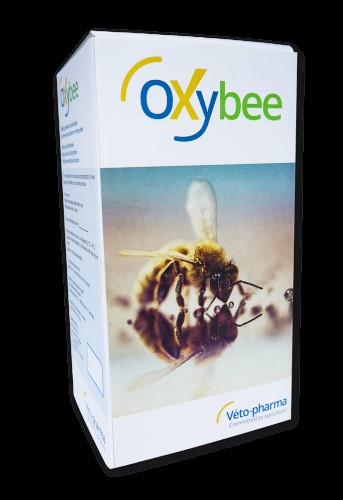
Distributed by the French pharmaceutical company Véto-Pharma, Oxybee is a new and easier way to apply oxalic acid during broodless periods to colonies for the treatment of varroa.
Oxybee comes with sachets of powder containing glycerol and essential oils as well as a bottle of oxalic acid. The glycerol increases the adherence of oxalic acid to the bees which improves dissemination throughout the colony. The powder and oxalic acid are mixed together and then applied with a trickle 2 bottle or syringe between the frames occupied by bees. Depending on the strength of the hive and the number of seams of bees in the brood body the litre of Oxybee can treat between 20 and 30 hives.
Beekeeping Blog
March 2020
As the weather has improved here in Lincolnshire, I have been able to get out with the bees more and more. It is one activity I can do safe in the knowledge I’m not mixing with other people! The bees will not wait for us no matter what is happening so we must keep inspecting and looking after them like we normally would.
Early in the month, this animal fur was found in patches around one of our apiaries. I think it may be badger fur! It didn’t do any damage to the apiary so whatever it is, it is quite welcome.
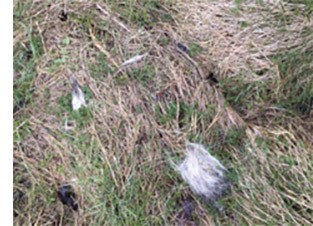
On sunny days, bees have been out flying and were quite busy collecting pollen so the mouseguards have been removed. From the picture here, you can see that when pollen baskets are full, they are quite cumbersome and could easily get knocked off by the mouseguard as they try to re-enter the hive so this is why they have been taken off. I have left the entrance blocks in as this just minimises the cold air rushing through the hives on colder days, as we are not completely into every-day-is-warm territory just yet...(are we ever?).
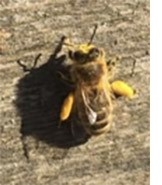
The horrible wet autumn and winter may technically be behind us now but for our bees, further pollen collection could be limited as farmers around us here in Lincolnshire have not been able to plant everything they wanted to this season. Although the bees seem to be collecting pollen now, this lack of field planting could mean that they have less to forage on later than they usually do. Therefore, one of my main priorities this month has been to make sure the bees get enough food, including pollen substitute. They have been fed a mixture of Nektapoll and Candipro depending on the apiary and they both seem to have gone down well, showing that it was still needed. I will keep checking throughout the season so that if the natural pollen dwindles at any point, they will still have enough substitute to keep the colony going.
This month, the first inspection was carried out. However, this inspection was not really an inspection. It sounds odd but there is always that time in the year before the season gets going that you want to know what’s going on inside the hive so you can prepare but it’s just a bit too cold to be taking the frames out. So, the first inspection was really a grading session. This is basically where the brood box is tilted upwards and the number of frames of bees is counted. From this, I can make a good estimate as to how strong each colony is. The floor was scraped out to remove any dead bees or detritus from the over wintering period and then the box was put back down. It is really quick - 30 seconds per hive and then the result is recorded. This gives an excellent indicator as to how each hive is doing at this time in the year and allows us to plan accordingly for when the bees really get going next month (fingers crossed!).
Bees for Development Update
We are having to pause many of our projects due to the coronavirus, although we have lots planned as soon as we can resume our work. We are quite certain that many of the places where we operate are ill-equipped to deal with the virus and we will need support from those who are able to donate at this difficult time. If you feel you can support Bees for Development now, please do so at http://www.beesfordevelopment.org/give-a-donation/
National Honey Show
Over the last few months the team have organised the usual spectacular line up of lectures by eminent bee scientists for this year’s show. In addition, we have planned an exhibition of his stunning bee related photographs, and lecture by the French photojournalist Eric Tourneret.
In the light of current events, we are seeing major beekeeping and agricultural shows and gatherings cancelled from now on well into August.
So, for The National Honey Show, we are watching and waiting as events unfold, and will keep you up to date with news via this newsletter, our National Honey Show Facebook page and website.
In the meantime there are seven years worth of our brilliant past lectures to catch up with on The National Honey Show YouTube Channel to usefully while away the hours in lockdown.
Happy and Healthy Beekeeping Easter from The National Honey Show Team www.honeyshow.co.uk
National Honey Show
22nd to 24th October 2020 at Sandown Park Race Course, Esher, Surrey, UK
